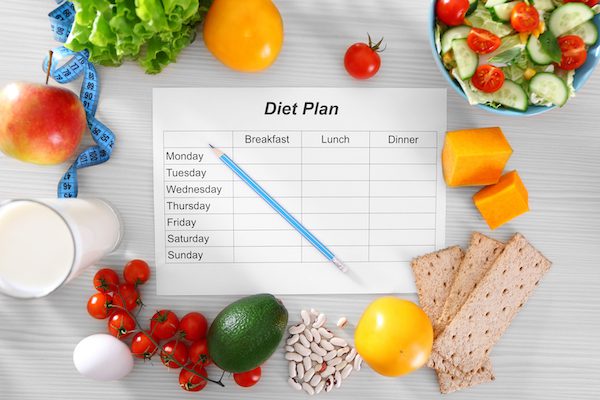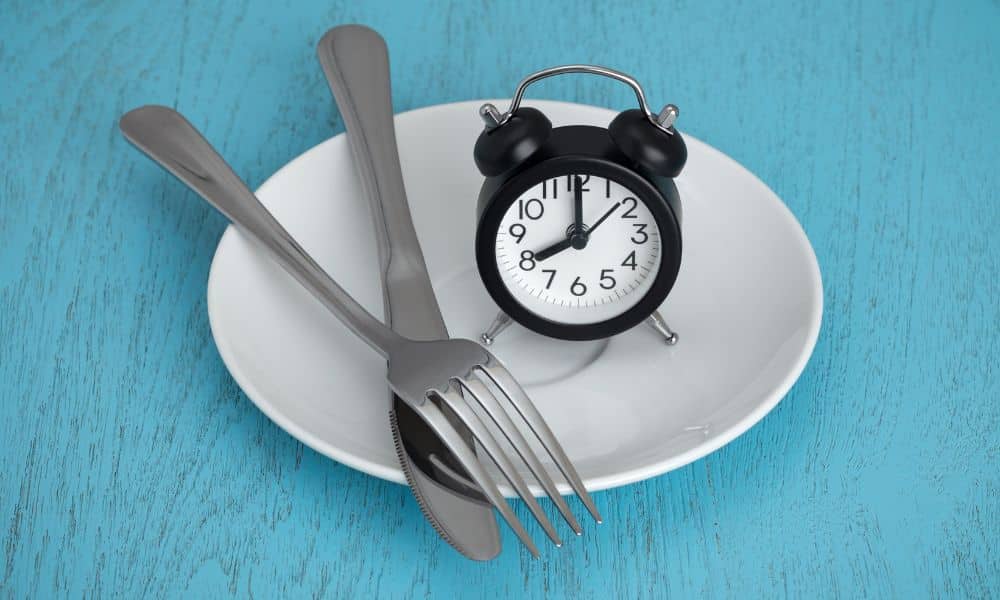Do you want to know how to use intermittent fasting to improve your health and fitness? Intermittent fasting, also known as intermittent calorie restriction, schedules meals that cycle between voluntary and non-fasting. The intermittent fasting schedule is short and has many benefits, including detoxification, weight loss, and increased metabolism. Intermittent fasting methods include alternate-day, periodic, and daily time-restricted feeding.
Intermittent fasting gives the body a chance to reset and flush out the toxins, bacteria, and chemicals from eating food. While the body needs energy, food comes with some adverse side effects. Even whole food can introduce the body to bacteria, yeast, or other diseases. Here is a list of the most critical types of intermittent fasting and how they can improve your health and fitness.

What is alternate-day fasting?
Alternate-day fasting is a type of fasting where you usually eat one day and then fast the next. It’s been an effective way to lose weight and improve health.
Your body has two primary sources of energy: glucose and ketones. Glucose is a type of sugar that comes from the food you eat. Ketones are a type of molecule that your body creates when it breaks down fat for energy.
Alternate-day fasting works by alternating between days where you mostly rely on glucose for energy and days where you mainly rely on ketones. This helps your body to better use both sources of energy.
Alternate-day fasting provides several health benefits, including:
- Weight loss: One study showed that people who alternated between normal eating and fasting days lost more weight than those who just dieted usually did.
- Improved blood sugar control: Alternate-day fasting can help to improve blood sugar control in people with diabetes.
- Reduced inflammation: One study showed that alternate-day fasting reduced inflammation in overweight people.
- Lower blood pressure: One study showed that alternate-day fasting lowered blood pressure in people with hypertension.
- Reduced cholesterol: One study showed that alternate-day fasting reduced harmful cholesterol levels in people with high cholesterol.
- Improved brain function: One study showed that alternate-day fasting improved cognitive function in rats.
What is periodic fasting?
Periodic fasting is a healthy trend growing in popularity in recent years. It is a way of eating where you cycle through periods of eating and fasting. There are different ways to do periodic fasting, but the most common is to normally eat for five days out of the week and then fast for two days. During the fasting days, you consume only water or other zero-calorie drinks.
There are several benefits to periodic fasting.
- First, it can help you lose weight or maintain your weight loss. Studies have shown that people who periodically fast weigh less than those who don’t.
- Second, it can improve your health. For example, periodic fasting improves blood sugar levels, blood pressure, and cholesterol levels.
- Third, it can also reduce the risk of cancer and heart disease.
If you want to try periodic fasting, keep a few things in mind. First, ensuring you eat a healthy diet during the non-fasting days is vital. Second, start slowly and gradually work your way up to the two fasting days. Finally, listening to your body to stop feeling sick or uncomfortable is crucial.
Periodic fasting is a great way to improve your health and lose weight. If you want to try it, talk to your doctor to ensure it is right for you.
What is daily time-restricted feeding?
Daily time restricted-feeding is a weight-loss method where you eat all your daily food within a specific timeframe. For example, you may only eat from 8 am to noon or 2 pm to 6 pm. This can help you control your portions and calorie intake. In addition, it can help regulate your blood sugar levels and insulin response.
Daily time restricted-feeding works by controlling your overall calorie intake. Eating all of your food within a specific timeframe makes you less likely to overindulge or snack throughout the day. In addition, eating within a set timeframe can help regulate your blood sugar levels and insulin response. This can be beneficial for weight loss and overall health.
There are several benefits to daily time restricted-feeding.
- First, it can help you lose weight by controlling your calorie intake.
- Second, it can help regulate your blood sugar levels and insulin response.
- Third, it can be necessary for weight loss, diabetes prevention, and overall health.
- Finally, it can help you focus on food and eat more mindfully.
What is Intermittent fasting 16/8?
Intermittent fasting 16/8 is intermittent fasting, where you fast for 16 hours and eat during an 8-hour window. This type of fasting is the easiest to stick to and can have many health benefits. During the 16-hour fast, you can drink water, coffee, or tea without milk or sweetener. You can also consume diet soda, but no regular soda.
For the 8-hour eating window, you can eat whatever you want as long as it’s within your calorie goals. Some people lose weight quickly with this type of intermittent fasting, while others find they maintain their weight. Intermittent fasting 16/8 can help you lose weight, maintain weight, improve health, and have more energy.
Are 12 hours enough for intermittent fasting?
Twelve hours of fasting is enough for some people, but others may find that they need to fast for 16 hours to see results. It’s essential to experiment and find what works best for you. A person’s current health and fitness determine what type of intervention they need to improve their health and wellness.
Intermittent fasting works like other diets and workouts. Where you start and your goals dictate the diet and training you need. Therefore, it is best to consult your doctor before starting a diet or workout for optimum results. If you cannot visit your doctor, it’s best to start slowly and escalate the intervention as you observe your body’s response.
How long does it take for fasting to work?
It depends on the person. Some people see results within a few days, while others may need to wait longer. As with any new routine, it’s essential to be patient and give fasting a chance to work its magic.
Like most body changes, fasting works immediately on a cellular level and spreads to more extensive systems throughout the body. So cells in the blood and hormones respond to intermittent fasting within hours. Then, the digestive, muscular, nervous, and circulatory systems will react to intermittent fasting over the next few days.
There are a few things to keep in mind when fasting. First, it’s essential to drink plenty of water and juice and eat healthy foods when you break your fast. Be sure to avoid processed foods and sugary drinks.
Fasting is a great way to improve your health and lose weight. It’s not a quick fix, but patience and perseverance can help you achieve your goals. Changes take time to bubble up from the cells to larger systems in the body.

What are the best times for intermittent fasting?
There is no one answer to this question, as the best time for fasting will vary from person to person. However, some general guidelines can help you determine the best time to fast.
When fasting, consider your schedule. For example, it may be challenging to fit in fast if you have a busy day filled with activities. In this case, it may be better to fast on a day when you have more downtime.
Another thing to consider is your body’s natural rhythm. For example, our bodies naturally have an energy lull in the early afternoon, so this may be a good time for a short fast. On the other hand, many people have more energy in the morning, so they may want to fast early.
Ultimately, the best time for fasting is the time that works best for you. If you’re unsure when that is, experiment a little and see what works best. For example, you may find that you prefer to fast on certain days or during certain times of the day. If you’re fasting safely and responsibly, there is no wrong way to do it.
What are the steps to intermittent fasting for beginners?
There are four basic steps to intermittent fasting for beginners:
- First, choose the proper fasting schedule. There are a few different schedules you can choose from, so find one that works best for your lifestyle and daily routine.
- Eat well during your feeding window. Eat plenty of nutritious foods during your feeding window to help power your body through the fasting period.
- Drink plenty of fluids. It’s essential to stay hydrated during intermittent fasting, so drink plenty of water and other healthy fluids throughout the day.
- Stay mentally strong. The biggest challenge for most people is staying mentally strong during intermittent fasting, so get ready for some challenging moments and remain positive.
If you stick to these four basic steps, you’ll be well on your way to success with intermittent fasting. Just remember to take things one step at a time and be patient, as it may take some time to get used to this new way of eating.

What are the steps to intermittent fasting for women?
There are a few key steps that you need to follow when intermittent fasting for women. First, you should consult your doctor before starting any new diet or weight loss plan. This is especially important if you have any health conditions or are taking medication.
Once you have the go-ahead from your doctor, you can start by gradually reducing your food intake over several days or weeks. This will help your body to adjust to the new eating schedule. You can begin intermittent fasting by skipping breakfast and delaying lunch by four to six hours.
Drink plenty of water and other fluids during your fasting periods. This will help to keep you hydrated and minimize any feelings of hunger. Also, avoid eating high-calorie foods during your fasting periods.
Finally, listening to your body and adjusting as needed is essential. If you find intermittent fasting too challenging or isn’t working for you during certain times, you can always go back to eating three meals a day. Intermittent is temporary and planned fasting, which works around your schedule, health, and goals. Thus, plan times that work best for you. There is no right or wrong answer but a time and way that works best for you.
The last word on intermittent fasting
Intermittent fasting is a powerful tool that can help improve your health and fitness through weight loss. Intermittent fasting can provide several benefits when done correctly, including weight loss, improved mental clarity, and decreased inflammation.
If you’re ready to try intermittent fasting, we have a few tips to help you get started. First, start slowly by fasting for just 12-16 hours. Once you’ve gotten used to shorter fasts, escalate the duration until you reach 24 hours. Second, ensure you drink plenty of water and electrolytes during your fast. Finally, get ready for some initial discomfort as your body adjusts to this new way of eating.
Be sure to consult your doctor before starting any new diet or exercise program, and be patient–the results may not be instantaneous, but they will come! Have you tried intermittent fasting? What was your experience? Please share your response in the comment section below.




